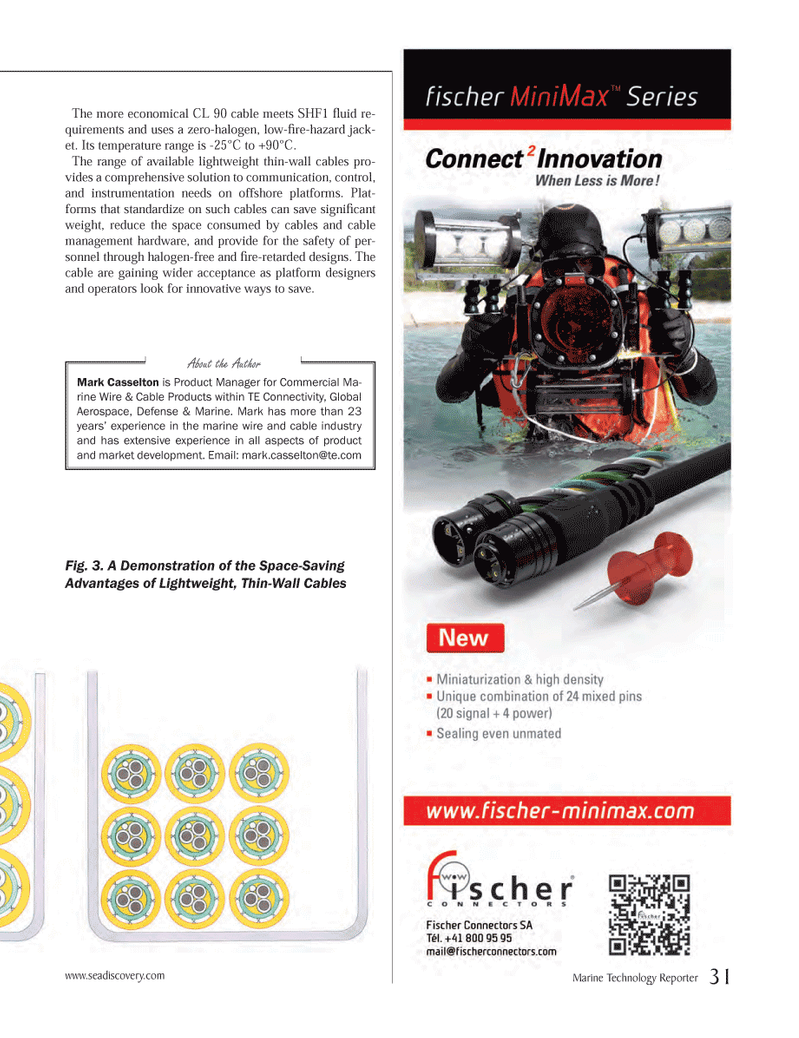
Page 31: of Marine Technology Magazine (October 2012)
Ocean Observation: Gliders, buoys & sub surface monitoring networks
Read this page in Pdf, Flash or Html5 edition of October 2012 Marine Technology Magazine
The more economical CL 90 cable meets SHF1 ß uid re- quirements and uses a zero-halogen, low-Þ re-hazard jack- et. Its temperature range is -25¡C to +90¡C.The range of available lightweight thin-wall cables pro- vides a comprehensive solution to communication, control, and instrumentation needs on offshore platforms. Plat- forms that standardize on such cables can save signiÞ cant weight, reduce the space consumed by cables and cable management hardware, and provide for the safety of per- sonnel through halogen-free and Þ re-retarded designs. The cable are gaining wider acceptance as platform designers and operators look for innovative ways to save. About the AuthorMark Casselton is Product Manager for Commercial Ma- rine Wire & Cable Products within TE Connectivity, Global Aerospace, Defense & Marine. Mark has more than 23 years? experience in the marine wire and cable industry and has extensive experience in all aspects of product and market development. Email: [email protected] Fig. 3. A Demonstration of the Space-Saving Advantages of Lightweight, Thin-Wall Cables Marine Technology Reporter 31www.seadiscovery.com MTR #8 (18-33).indd 31MTR #8 (18-33).indd 3110/3/2012 9:48:25 AM10/3/2012 9:48:25 AM

 30
30

 32
32
